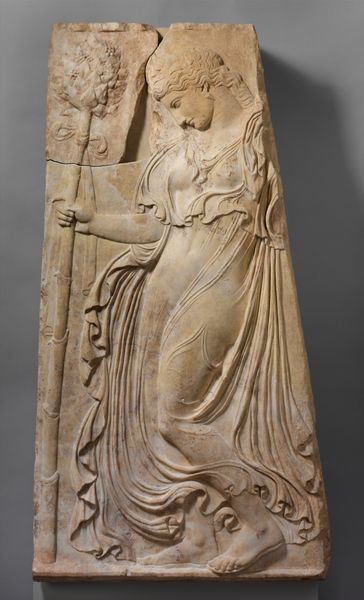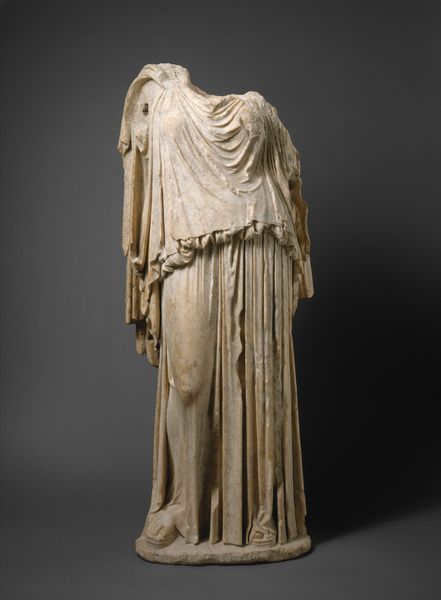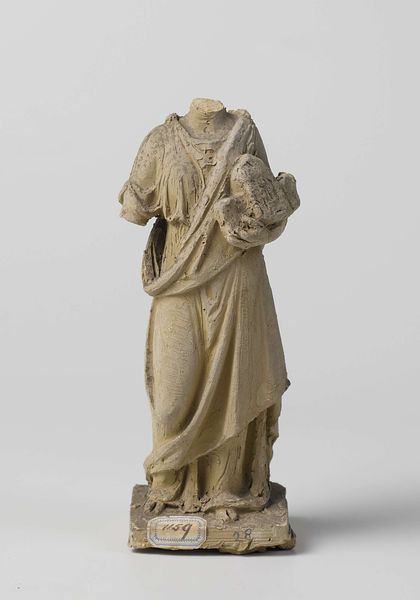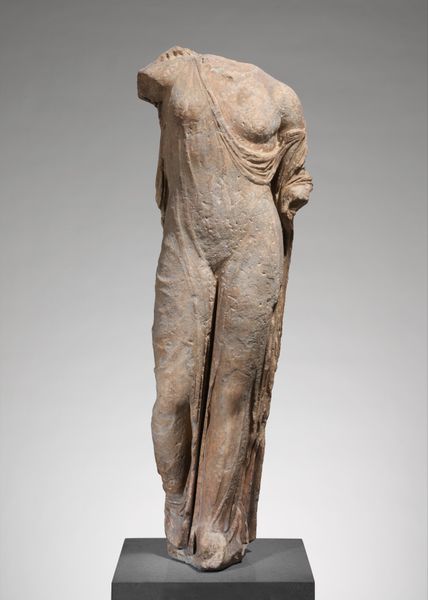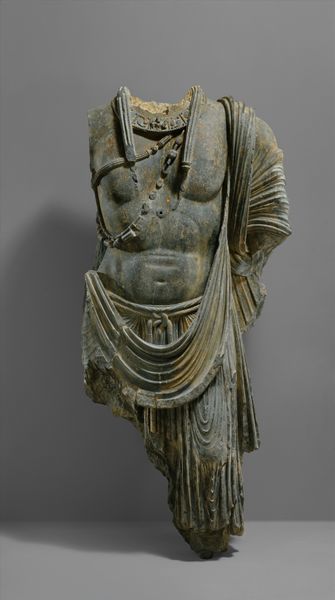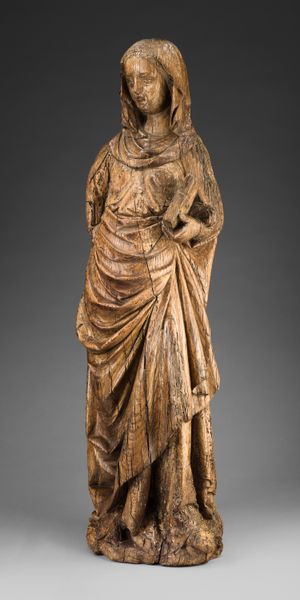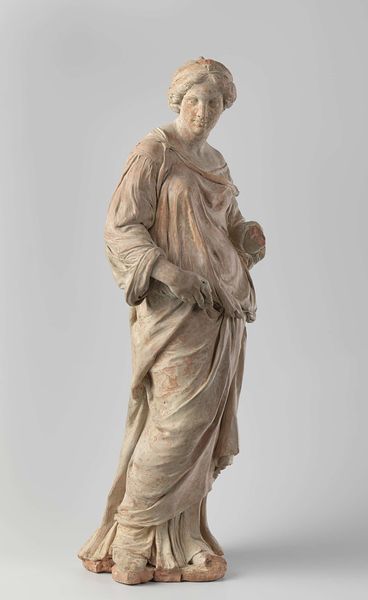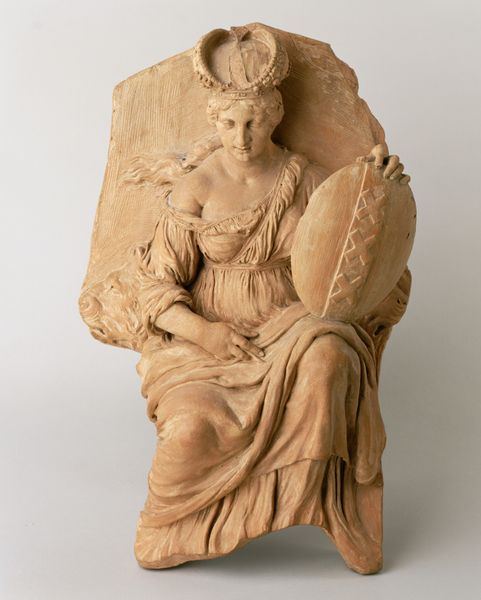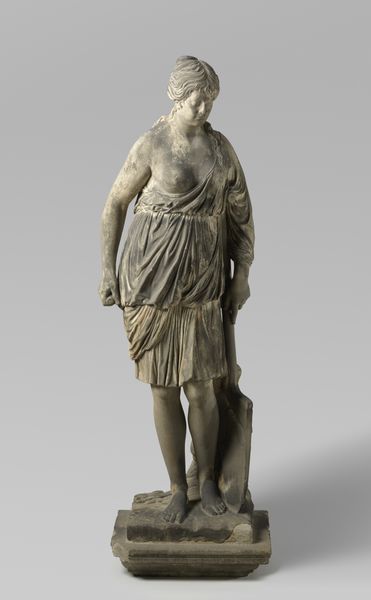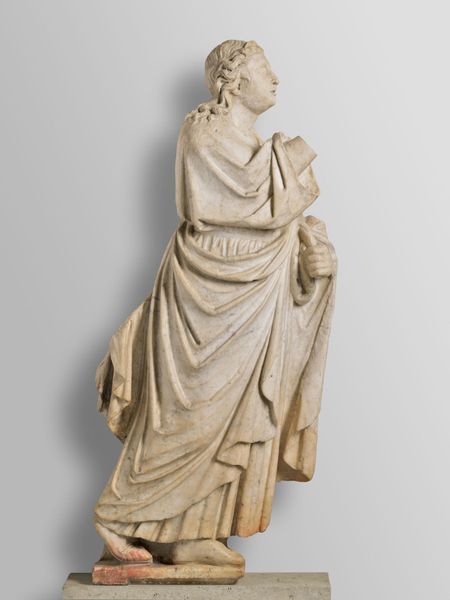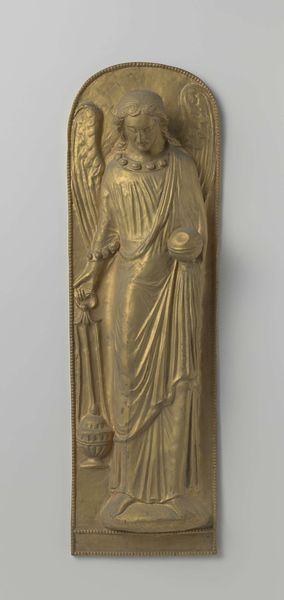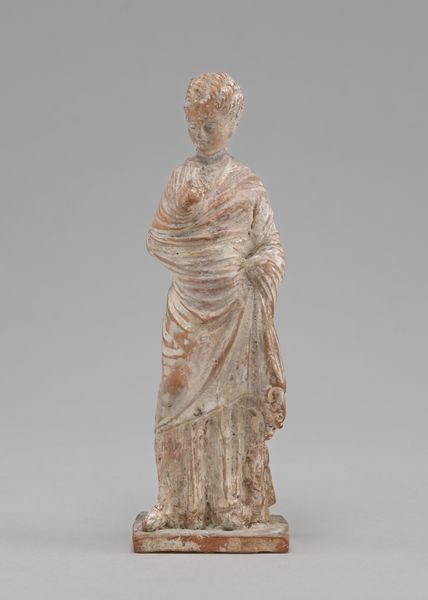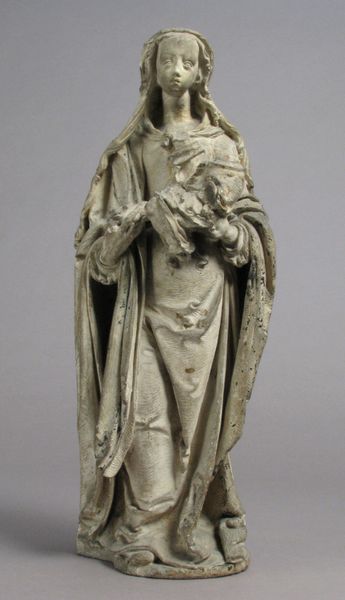
carving, sculpture
#
portrait
#
carving
#
stone
#
sculpture
#
asian-art
#
figuration
#
sculpting
#
ancient-mediterranean
#
sculpture
#
statue
Dimensions: 55-1/2 x 18-1/2 x 9 in. (141.0 x 47.0 cm)
Copyright: Public Domain
This sculpture of the Buddha was carved from gray schist in the ancient region of Gandhara, likely between the 1st and 3rd centuries CE. Gandhara, located in present-day Pakistan and Afghanistan, was a melting pot of cultures, bridging the East and West through trade and cultural exchange. This cultural fusion is evident in the sculpture itself. The Buddha's serene expression and monastic robe reflect Indian artistic traditions, while the realistic drapery and idealized human form show the influence of classical Greek sculpture, which arrived with Alexander the Great. The institutional histories of both Buddhism and Greek art are present here. This syncretism reflects the way that religious and philosophical ideas moved along the silk road. To truly understand this Buddha, we delve into archaeological reports, religious texts, and studies of trade routes. Each tells a story of how cultural exchange shapes artistic production.
Comments
minneapolisinstituteofart about 2 years ago
⋮
The Buddha can be recognized by several marks, most prominently the ushnisha, a protrusion on the head that in this sculpture appears as a bun hairstyle, and the urna, a tuft of hair between his eyes from which he emits a ray of light that reveals the whole universe. On the pedestal a meditating Buddha is flanked by Brahma and Indra, two Hindu gods who were incorporated into the Buddhist pantheon as guardian deities. This sculpture is from Gandhara, a historical region in present-day northwest Pakistan and eastern Afghanistan. Gandharan art has close affinities with ancient Greek and Roman art, evidenced by the flowing folds of robes and chiseled facial features. Greek troops occupied the area in 330 BCE, and Indian, Persian, and central Asian forces also established a presence there between 300 BCE and 460 CE. Trade provided the ultimate incentive for all travelers, as Gandhara occupied a central location along the caravan routes that connected China to lands farther west.
Join the conversation
Join millions of artists and users on Artera today and experience the ultimate creative platform.
